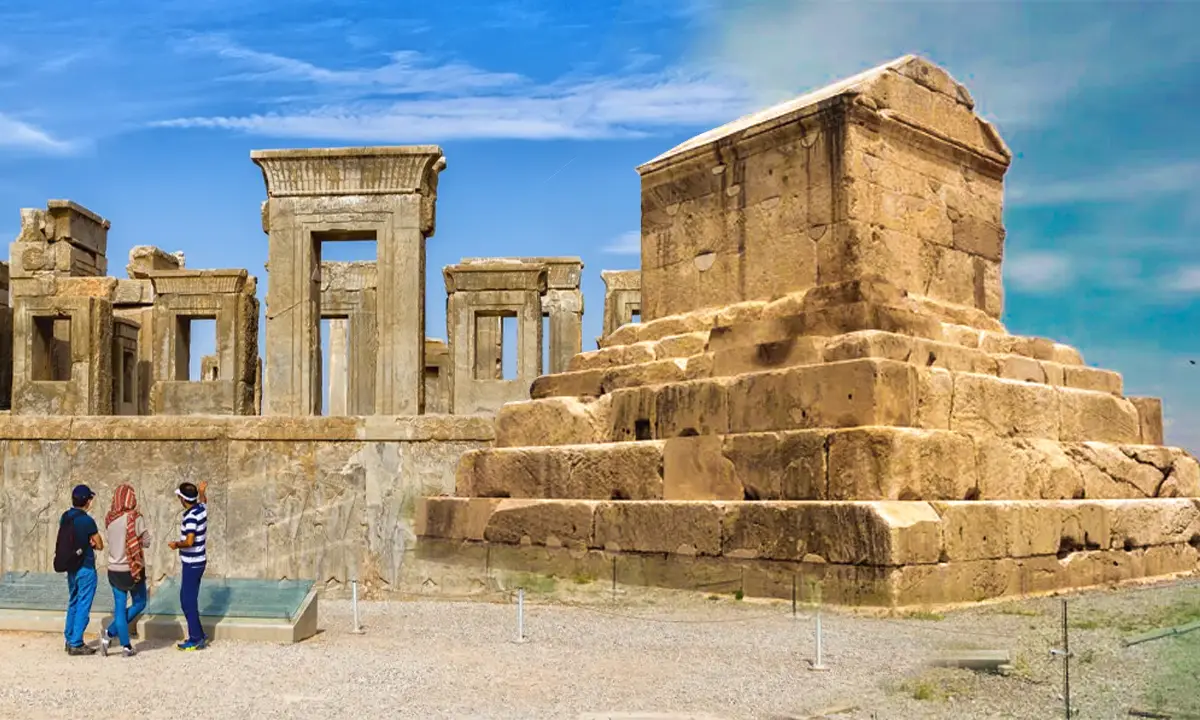Chogha Zanbil; Oldest Elamite Ziggurat in the Near East
![]() Author : asal | Date : Monday 28 July 2025 16:44
Author : asal | Date : Monday 28 July 2025 16:44
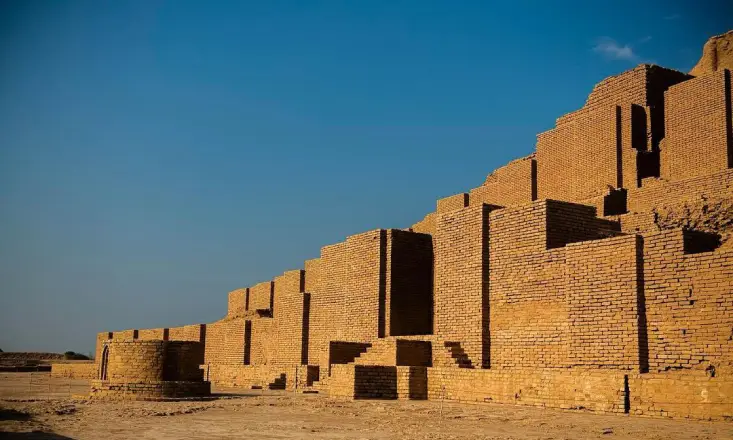
The ancient civilizations that lived in Western Asia used a special style of architecture to build religious places. They built a pyramid staircase with brick stairs, which is called the ziggurat.
Maybe you ask what is the meaning of a ziggurat. The ziggurat means rising to the sky, and its construction was roughly from 4200 to 2500 years ago. Since these ziggurats were holy places, people made them with the best type of clay materials or brickwork.
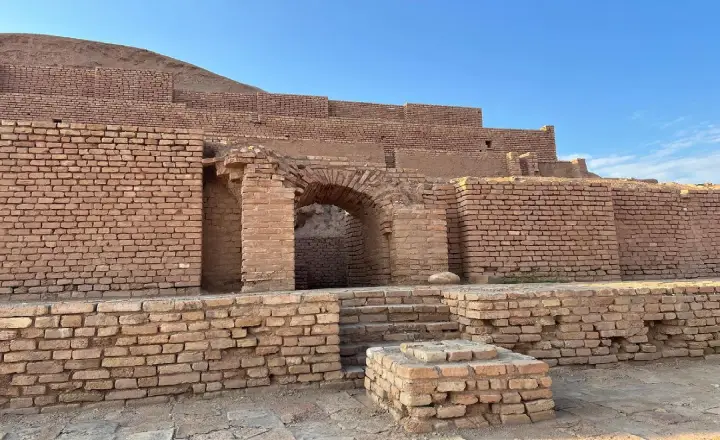
It is interesting to know that one of the biggest and most intact ziggurats in the world is in Iran: The Chogha Zanbil Ziggurat, and also this ziggurat is the first attraction registered as a UNESCO World Heritage site among all Iran's tourist attractions and has a reputation for itself in the world.
Where is Chogha Zanbil?
This time, we are going to the ancient city of Susa in the province of Khuzestan. a city that holds some of the most valuable historical monuments and boasts its long history.
To visit Chogha Zanbil, the first Iranian religious site, you should go 40 km southeast of Susa near the ancient Haft Tapeh area.
Chogha Zanbil history
Your curiosity will soar as soon as this spectacular structure attracts your attention. Who and when were responsible for creating such a legacy for the future? Chogha Zanbil is a shrine that the Elamites constructed in approximately 1250 BC. At that time, the monarch of ancient Elam built Chogha Zanbil, a place to glorify God, in the center and tallest area of the city.
✔️Read More: Dezful, Iran: a travel guide to one of the world's ancient cities
The name of the king who built Chogha Zanbil is Untash Napirash which, unfortunately, was destroyed during the clashes and the invasion of the Assyrian army was buried under the ground for a long time and it took the form of a hill during that time.
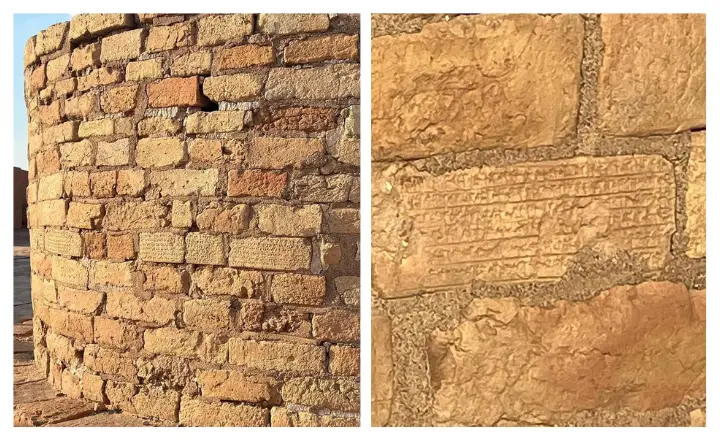
and on the inscription which was found from the Assyrian king of that time, Assur Banipal is written: I destroyed the Susa Ziggurat, which was glazed with bricks with lapis lazuli and ruined the Elamite structures. I turned Susa into ruin, and the voice of humans became quiet in this place by me.
How Chogha Zanbil was discovered?
The story of discovering Chogha Zanbil is also interesting. In 1890, a person named Jacques de Morgan, a geologist of the time made a statement saying that there were oil mines in the Chogha Zanbil lands.
50 years after that, several engineers in the same area that was doing oil drilling found a brick, which had written something on it. then sent the bricks to an archaeologist to research them.
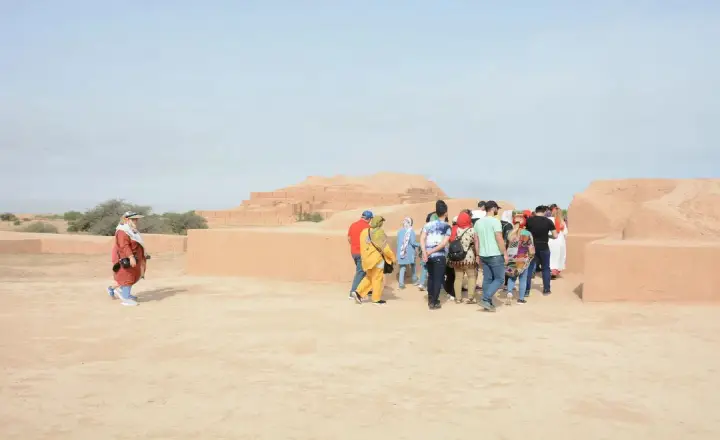
This move was the start of suspicions about the historicity of the region, which also led researchers and archaeologists to the area and they discovered Chogha Zanbil, the first monument in the country that is registered on the UNESCO World Heritage List.
During the search, archaeologists succeeded in finding rock paintings that belong to the Elamite era and have been associated with the United Kingdom of Napier. There is also an interesting picture on this rock figure, a picture of a woman with a tail of fish who holds snakes in Chogha Zanbil.
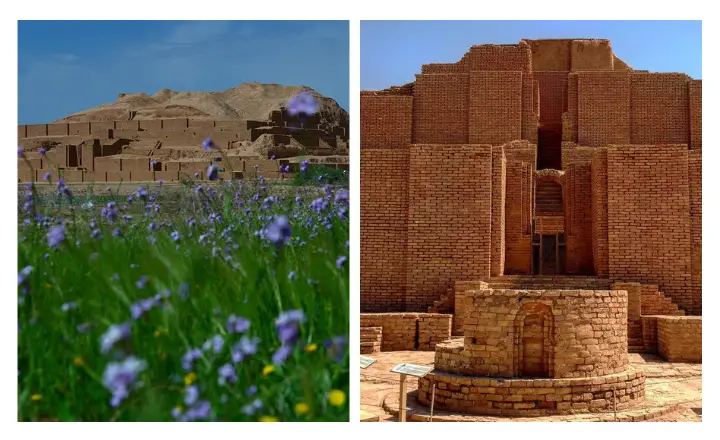
This valuable monument of Iranian culture and history, which reflects Iran's several thousand years of civilization, is not kept in Iran, like many other historical monuments, and is in the Louvre Museum of France.
Chogha Zanbil architecture
Let's tell you a little about the Iranian architecture of this building to know more about it; the Chogha Zanbil building has a square appearance and is surrounded by circular fences around it. Chogha Zanbil had originally 5 floors and was 52 meters high but today only 2 floors and a half of it remain, and its height is 25 meters.
✔️Read More: Iranian architecture, a combination of math and mysticism
Perhaps you ask how the number of floors is estimated in Chogha Zanbil. If you check the gradient of the pyramid classes and assume that the stairs are on the same slope, then on the fifth floor, the stairs will reach the center, which means we have reached the top of the pyramid and the floors are over.
Also, the four corners of this religious site are located in four main directions, and it shows that at that time the main directions were well-known.
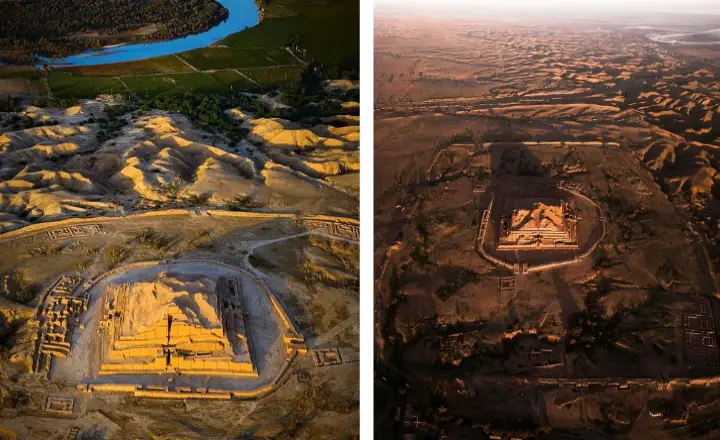
More information about Chogha Zanbil:
Address: Susa County - Khuzestan Province - Iran
Access time: 8:00 till 18:30
Closure time: 9th and 10th of Muharram – 28th of Safar – 21st of Ramadan – 25th of Shawwal – 14th of Khordad
Cost for foreign nationals: 200,000 IRR
Suggested visit time: 2 hours
✔️Read More: All you need to know to travel to Khuzestan
Last Word
The Chogha Zanbil, the oldest Elamite ziggurat in the Near East, stands as a monumental testament to ancient Elamite culture and architectural prowess. This UNESCO World Heritage site, with its intricate design and historical significance, offers a profound glimpse into Iran's rich and diverse ancient history. It exemplifies the sophistication of early urban planning and religious architecture, marking an important chapter in the study of the Near East's archaeological and cultural heritage.
FAQs About Chogha Zanbil – The Ancient Elamite Ziggurat
We answer below the most frequently asked questions about visiting and understanding Chogha Zanbil, a UNESCO World Heritage Site in Iran.
What is Chogha Zanbil and why is it important?
Chogha Zanbil is one of the best-preserved ziggurats in the world, built by the Elamite king Untash-Napirisha around 1250 BCE. It is a significant remnant of ancient Elamite civilization and architecture.
Where is Chogha Zanbil located?
Chogha Zanbil is located in Khuzestan Province, southwestern Iran, approximately 40 km southeast of the ancient city of Susa.
Is Chogha Zanbil open to tourists?
Yes, the site is open to visitors and is considered one of the top archaeological attractions in Iran.
Do I need a ticket to enter Chogha Zanbil?
Yes, a small entrance fee is required for tourists. Pricing may vary for domestic and international visitors.
What is the best time to visit Chogha Zanbil?
The best time to visit is between October and April when the weather in Khuzestan is cooler and more pleasant for outdoor exploration.
Is there any accommodation near Chogha Zanbil?
Yes, visitors can stay in nearby towns like Shush (Susa) or Dezful, which offer a range of hotels and guesthouses.
How can I reach Chogha Zanbil from major cities like Tehran or Ahvaz?
You can fly or take a train to Ahvaz, then drive or take a local tour to the site. Private car rental is also an option for more flexibility.
Why is Chogha Zanbil a UNESCO World Heritage Site?
It was designated a UNESCO site in 1979 due to its exceptional state of preservation and its importance as one of the few remaining ziggurats outside Mesopotamia.



.webp)

